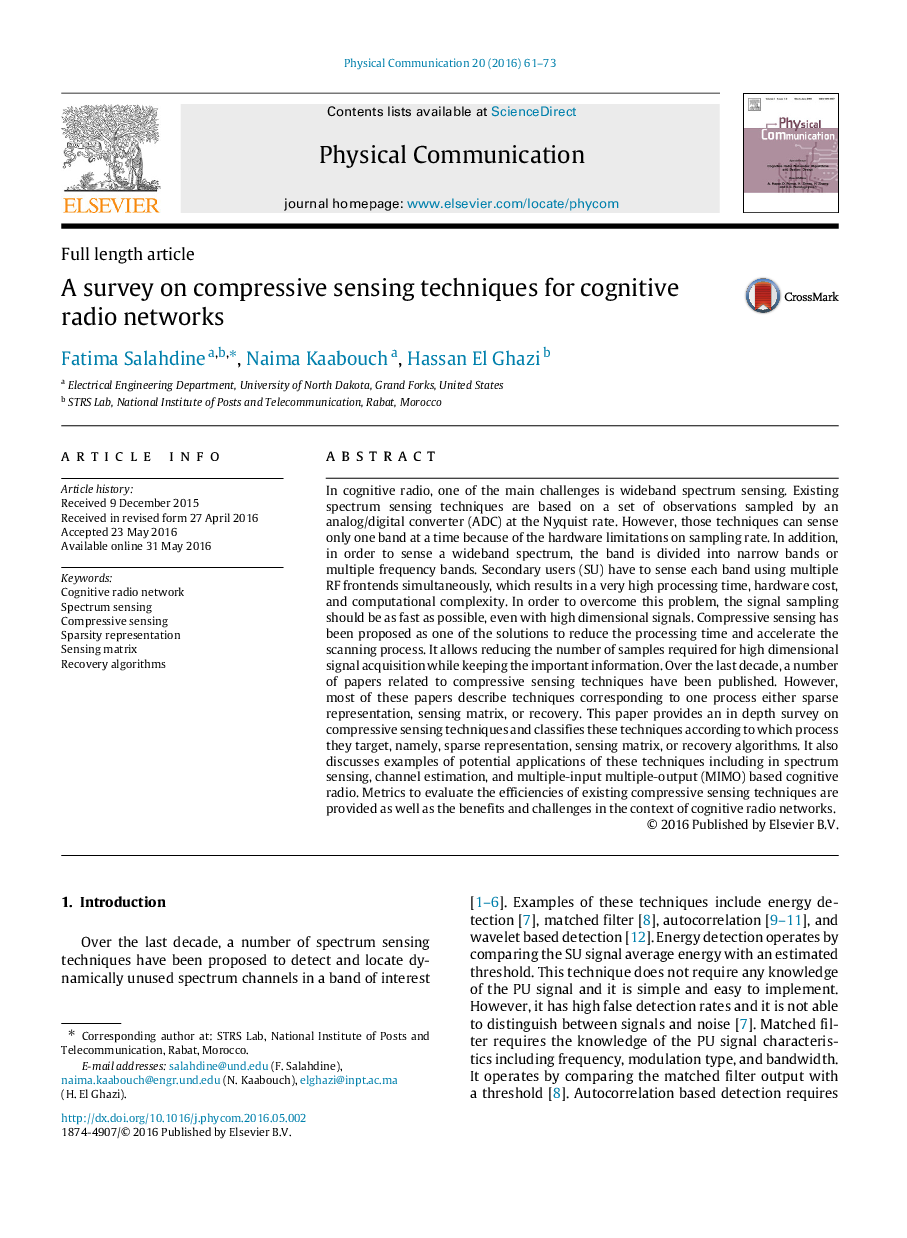| Article ID | Journal | Published Year | Pages | File Type |
|---|---|---|---|---|
| 466263 | Physical Communication | 2016 | 13 Pages |
In cognitive radio, one of the main challenges is wideband spectrum sensing. Existing spectrum sensing techniques are based on a set of observations sampled by an analog/digital converter (ADC) at the Nyquist rate. However, those techniques can sense only one band at a time because of the hardware limitations on sampling rate. In addition, in order to sense a wideband spectrum, the band is divided into narrow bands or multiple frequency bands. Secondary users (SU) have to sense each band using multiple RF frontends simultaneously, which results in a very high processing time, hardware cost, and computational complexity. In order to overcome this problem, the signal sampling should be as fast as possible, even with high dimensional signals. Compressive sensing has been proposed as one of the solutions to reduce the processing time and accelerate the scanning process. It allows reducing the number of samples required for high dimensional signal acquisition while keeping the important information. Over the last decade, a number of papers related to compressive sensing techniques have been published. However, most of these papers describe techniques corresponding to one process either sparse representation, sensing matrix, or recovery. This paper provides an in depth survey on compressive sensing techniques and classifies these techniques according to which process they target, namely, sparse representation, sensing matrix, or recovery algorithms. It also discusses examples of potential applications of these techniques including in spectrum sensing, channel estimation, and multiple-input multiple-output (MIMO) based cognitive radio. Metrics to evaluate the efficiencies of existing compressive sensing techniques are provided as well as the benefits and challenges in the context of cognitive radio networks.
